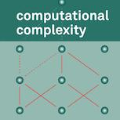The problem of covering random points in a plane with sets of a given shape has several practical applications in communications and operations research. One especially prominent application is the coverage of randomly-located points of interest by randomly-located sensors in a wireless sensor network. In this article we consider the situation of a large area containing randomly placed points (representing points of interest), as well a number of randomly-placed disks of equal radius in the same region (representing individual sensors' coverage areas). The problem of finding the smallest possible set of disks that cover the given points is known to be NP-complete. We show that the computational complexity may be reduced by classifying the disks into several definite classes that can be characterized as necessary, excludable, or indeterminate. The problem may then be reduced to considering only the indeterminate sets and the points that they cover. In addition, indeterminate sets and the points that they cover may be divided into disjoint ``islands'' that can be solved separately. Hence the actual complexity is determined by the number of points and sets in the largest island. We run a number of simulations to show how the proportion of sets and points of various types depend on two basic scale-invariant parameters related to point and set density. We show that enormous reductions in complexity can be achieved even in situations where point and set density is relatively high.
翻译:在具有特定形状的平面上覆盖随机点的问题在通信和业务研究中有若干实际应用。一个特别突出的应用是通过无线传感器网络中随机定位传感器随机定位的感兴趣点的覆盖。在本篇文章中,我们考虑了一个大区域的情况,其中随机放置点(代表利益点),以及在同一区域中一些相同半径的随机放置盘(代表单个传感器的覆盖区域),找到覆盖指定点的最小的磁盘的问题已知是NP-完成的。我们表明,将磁盘分类为几个可以定性为必要的、可排除的或不确定的确定类别,可以降低计算的复杂性。然后,问题可能缩小到只考虑不确定点及其覆盖的点。此外,不确定的数据集和覆盖的点可能会分为不连续的'岛屿' 。因此,实际复杂性是由最大岛屿的点和定点数决定的。我们用一个固定的确定型号将磁盘分成若干固定的类别。我们用一个固定的固定型号进行模拟,以显示各种复杂度的大小比例。我们用一个相对的精确度来显示各种不同密度的大小的大小。




